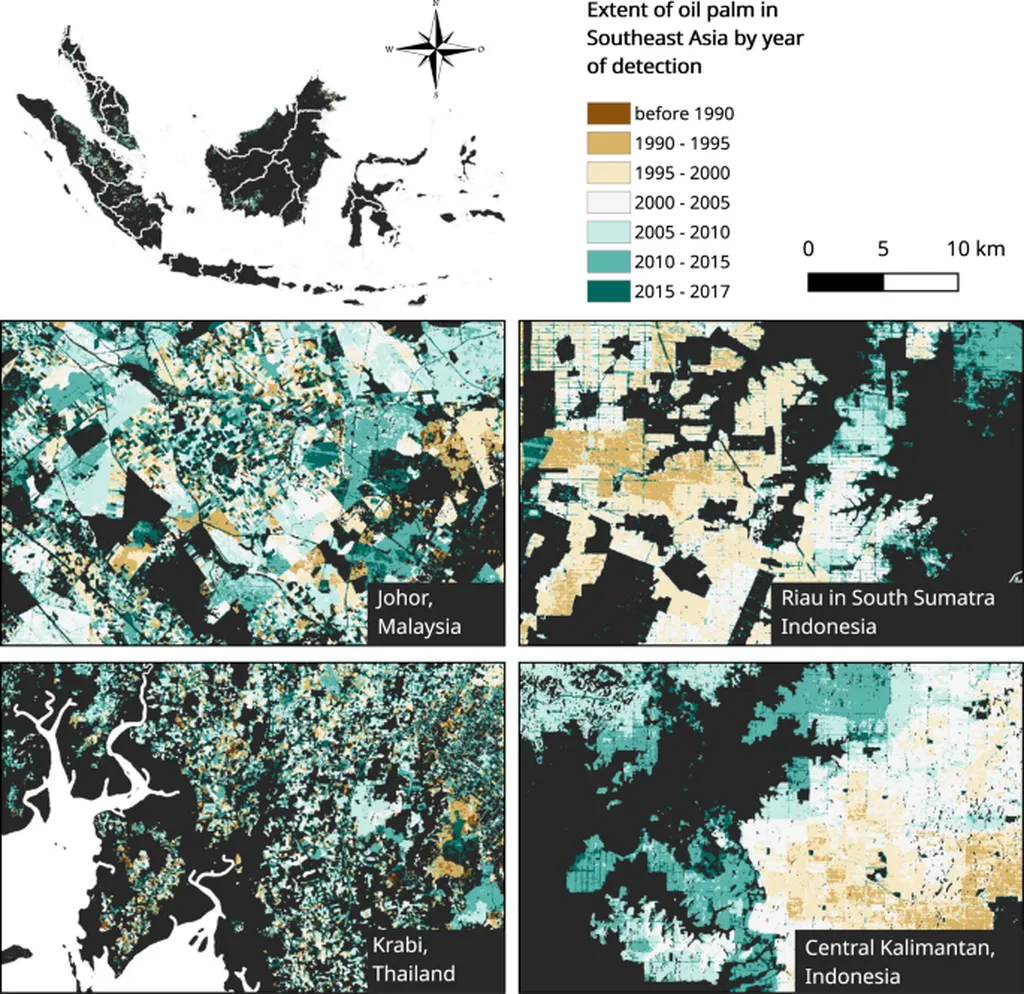In the sprawling, sun-dappled plantations of Southeast Asia, a silent revolution is underway, one that doesn’t involve tractors or drones, but rather, the invisible spectrum of light that our eyes can’t see. Researchers have long been harnessing the power of hyperspectral imaging to monitor crop health, and now, a study published in *IEEE Access* has shed new light on how to optimize this technology for oil palm plantations, a crop that’s a backbone of the global agricultural economy.
The study, led by Tri Wahyu Oktaviana Putri from the Department of Electrical Engineering at the University of Malaya, delves into the nitty-gritty of hyperspectral imaging, exploring how the configuration of the Region of Interest (ROI) and the number of spectral bands used can significantly impact the accuracy of oil palm detection. “We wanted to understand how these factors influence the classification accuracy,” Putri explains, “because ultimately, the goal is to provide plantation managers with reliable, accurate data to monitor their crops.”
Oil palm plantations stretch across vast expanses, making manual monitoring a Herculean task. Hyperspectral imaging offers a solution, capturing data across hundreds of narrow, contiguous spectral bands. But with this wealth of data comes complexity. The study found that the shape and size of the ROI—the area of the canopy being analyzed—plays a crucial role in classification accuracy. Compact, circular ROIs emerged as the top performers, offering a balance between capturing enough data and avoiding noise.
The number of spectral bands used also proved significant. While more bands might seem better, the study found that a moderate number of bands, carefully selected, can retain high accuracy while reducing computational complexity. “It’s about finding the sweet spot,” Putri notes, “where we’re using enough data to ensure accuracy, but not so much that it becomes unwieldy.”
The implications for the agriculture sector are substantial. Oil palm is a major cash crop, with Malaysia and Indonesia accounting for around 84% of global production. Accurate, efficient monitoring can lead to early detection of diseases, optimized fertilizer use, and improved yield. “This technology can be a game-changer for precision agriculture,” Putri says, “helping farmers make data-driven decisions that can improve productivity and sustainability.”
The study’s findings could shape future developments in the field, driving the creation of more efficient, accurate hyperspectral imaging systems tailored to the needs of the agriculture sector. As the technology becomes more accessible and affordable, it could become a staple in the toolkit of modern farmers, helping them navigate the challenges of feeding a growing global population sustainably.
In the end, this research is more than just about detecting oil palms. It’s about harnessing the power of technology to make agriculture smarter, more efficient, and more sustainable. And in a world where the stakes are high, every bit of data counts.

